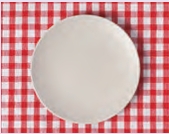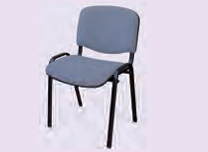练习 Exercises
- 1 分角色朗读课文 Role-play the dialogues.
-
2 根据课文内容回答问题 Answer the questions based on the dialogues.
- 电脑在哪儿?Diànnǎo zài nǎr?
- 书在哪儿?Shū zài nǎr?
- 桌子里面有什么?Zhuōzi lǐmiàn yǒu shénme?
- 哪个人是王方?Nǎge rén shì Wáng Fāng?
- 哪个人是谢朋?Nǎge rén shì Xiè Péng?
描述图片练习 3 用本课新学的语言点和词语描述图片
Describe the pictures using the newly-learned language points and words.

______ yǒu ______。
______ 有______。
______ yǒu ______ hé ______。
______ 有____和_____。Wǒ néng ______ ma?
我 能 ______ 吗?
Tā zài ______ gōngzuò
他在 ______ 工作。
文档内容 4 选择适当的量词填空 Choose a suitable measure word to fill in each blank.- gè 个
- kǒu 口
- běn 本
- kuài 块
Wǒ jiā yǒu sān rén. (1) 我 家 有 三 ____ 人。
Wǒ mǎi yī bēizi. (2) 我 买 一 ____ 杯子。
Wǒ yǒu wǔ Hànyǔ shū. (3) 我 有 五 ____ 汉语 书。
Yǐzi bāshí qián. (4) 椅子八十 ____ 钱。
轻声读法学习 2 叠音词的读法 Pronunciation of Reduplicated Syllables
在双音节的叠音词中,后一个音节大多读作轻声。
In a disyllabic word with reduplicated syllables, the second syllable is usually read in the neutral tone.
听录音并跟读,注意轻声音节的读法 10-5
Listen to the recording and read after it. Pay attention to the neutral tone.
bàba māma yéye nǎinai
gēge jiějie dìdi mèimei
gūgu shūshu tàitai xīngxing
xièxie kankan shuōshuo chángchang
3 带后缀词的读法:“-们,-子,-头”
Pronunciation of Words with the Suffix “-们”, “-子” or “-头”
在带后缀 “-们、-子、-头” 的词语中,“们、子、头” 一般读作轻声。
例如:
Being part of a word, the suffixes “们”, “子” and “头” are usually read in the neutral tone. For example:
听录音并跟读,注意后缀的读法 10-6
Listen to the recording and read after it. Pay attention to the suffixes.
nǐmen(你们) wǒmen(我们) tāmen(他们) rénmen(人们)
zhuōzi(桌子) yǐzi(椅子) bēizi(杯子) bèizi(被子)
shétou(舌头) zhěntou(枕头) shítóu(石头) mùtou(木头)
qiántou(前头) hòutou(后头) lǐtou(里头) wàitou(外头)
汉字知识 汉字 Characters
1 认识独体字 Single-Component Characters
(1)“上”,下边的横表示位置的界线,上边的短横表示在上面。意思是 “高处、上面”。
The horizontal stroke at the bottom of “上” indicates the border line for reference, and the short horizontal stroke indicates a position above the border line, meaning “up/above”.

shàng
(2)“下”,与 “上” 的意思相对,指位置在低处、下面。
Opposite to “上”, “下” means “down/below”.

xià
(3)“本”,字形是在 “木” 的下端加圆点指事符号 · ,本义是指树的根部,后引申为事物的根本。
“本” originally looked like a tree with a dot sign at its bottom. The character originally referred to the root of a tree, and now it means “the root of everything”.

běn
(4)“末”,本义是树梢部位、尖端,现在也指非根本的、次要的。
“末” originally referred to the tip or top of a tree. Now it also means “non – fundamental and secondary”.

mò
2 汉字结构(5):全包围结构 Structure of Chinese Characters (5): enclosure
合体结构中的全包围结构是指四面包围结构,结构图形为 □。
As a compound structure, the enclosure structure is a structure enclosed on all the four sides. The diagram is □.
汉字知识模块 结构
Structure例字
Example Characters图解
Illustrations全包围结构
complete enclosure四 sì four
国 guó country, nation四 国 3 汉字偏旁 “囗” 和 “礻” Chinese Radicals: “囗” and “礻”
偏旁
Radical解释
Explanation例字
Example Characters囗 国字框,一般表示被困住、包围住。
The radical “囗” usually means being trapped or besieged.国 guó country, nation
困 kùn to be trapped礻 示字旁,是 “示” 的变体,一般和神、祭祀、福祸有关。
The radical “礻” is a variant of “示”, a character usually related to deity, sacrificial rites and one’s fortune.视 shì to look, to view
祝 zhù to wish运用 1 双人活动 Pair Work
两人一组,根据实际情况进行问答练习。
Work in pairs and ask and answer questions according to the actual situations.示例:
For example:Nǐ de zhuōzi shàngmiàn yǒu shénme?
A: 你的桌子 上面 有 什么?B: ……
Nǐ de yǐzi xiàmiàn yǒu shénme?
A: 你的椅子下面 有 什么?B: ……
小组活动 2 小组活动 Group Work
3 – 4人一组,互相介绍小组各成员的座位位置并记录,每组请一位同学报告情况。
Work in groups of 3 – 4. Describe the location of the seat of each of your group member and take notes. Each group chooses one member to make a report.
hòumiàn zuǒbian yòubian
补充生词:后面、 左边、 右边
Supplementary words: behind, left, right
姓名 Name 位置 Location 1 大卫
Dàwèi大卫在我左边。/我左边是大卫。
Dàwèi zài wǒ zuǒbian./ Wǒ zuǒbian shì Dàwèi.2 3









Comments